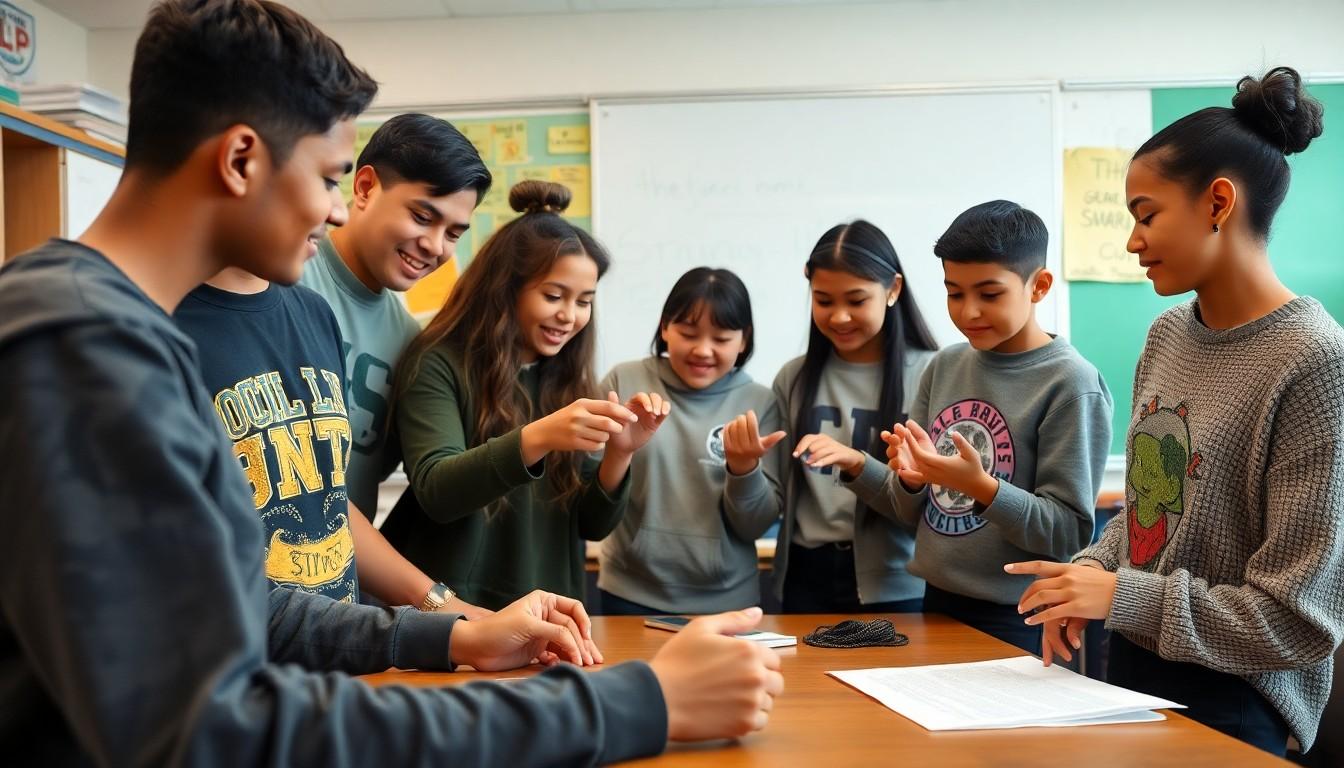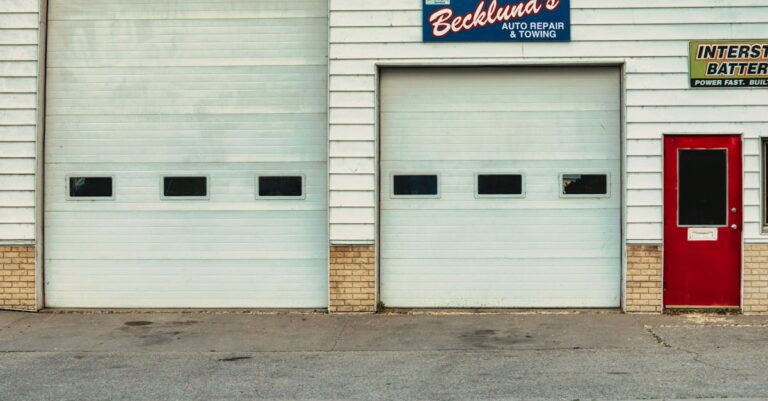Table of Contents
ToggleWhen traditional schools just don’t cut it, alternative schools step in like a superhero in a cape—minus the spandex, of course. These unique learning environments cater to kids who march to the beat of their own drum, often leaving conventional classrooms scratching their heads. Instead of labeling them as “bad,” these schools recognize their potential and creativity, channeling that energy into something productive and, dare we say, fun.
Imagine a place where learning feels less like a chore and more like an adventure. Alternative schools provide tailored programs that resonate with each student’s interests and needs. They transform challenges into opportunities, proving that every child has a unique path to success. So, let’s dive into the world of alternative education and discover how these schools can turn mischief into motivation and rebellion into remarkable achievements.
Overview of Alternative Schools
Alternative schools provide unique educational environments tailored for students who don’t thrive in traditional settings. They prioritize individual learning styles, addressing the diverse needs of students facing challenges. Many of these schools emphasize a non-conventional approach, incorporating hands-on learning, project-based assignments, and personalized mentorship.
Courses offered at alternative schools often align with students’ interests, fostering a sense of ownership over their education. Smaller class sizes create an intimate atmosphere, allowing teachers to devote one-on-one attention. Academic and behavioral support systems play a crucial role in promoting student success.
Programs at these institutions may include vocational training, art therapy, and life skills development. Flexibility in scheduling enables students to engage in extracurricular activities and pursue passions outside of academics. Such options encourage creativity and self-expression, elements often lacking in traditional educational frameworks.
Assessment methods differ significantly from standard schools. Alternative schools might use portfolios, performance tasks, and anecdotal records to evaluate student progress. This system provides a more comprehensive view of a student’s capabilities.
Success stories highlight the effectiveness of alternative schools. Numerous students have transformed their academic trajectories, displaying improved behavior and increased motivation. Graduates often report higher levels of self-esteem and a clearer sense of purpose.
Overall, alternative schools stand as supportive pathways for students needing a different approach, ultimately helping them succeed in both education and life.
Characteristics of Alternative Schools
Alternative schools exhibit distinctive characteristics that cater to students needing different educational approaches. These schools emphasize individualized learning strategies and a commitment to behavioral enhancement.
Individualized Learning Approaches
Personalized learning plans in alternative schools allow educators to address each student’s unique strengths and weaknesses. Flexibility in curriculum design enables students to explore their interests within academic frameworks. Small class sizes foster one-on-one interaction between teachers and students, creating a supportive environment. Customized assessments also monitor progress effectively, shifting focus away from standardized testing. Engaging, hands-on activities further encourage students to take ownership of their education.
Focus on Behavioral Improvement
Behavioral development remains a cornerstone of alternative education. Schools often implement tailored behavior management strategies that promote positive actions. Supportive mentoring relationships between staff and students enhance emotional growth and resilience. Behavioral interventions may include conflict resolution training and social skills workshops. These schools aim to create an inclusive atmosphere where all students feel valued and understood. As a result, many students experience significant improvements in conduct and interpersonal relationships.
Types of Alternative Schools
Alternative schools come in various forms, each catering to unique student needs. Understanding different types helps in selecting the right environment for students facing challenges in traditional settings.
Therapeutic Schools
Therapeutic schools focus on the emotional and psychological growth of students. Designed for those with mental health issues or behavioral problems, these institutions provide specialized support. Staff often includes psychologists and counselors who work closely with students. Structured environments help foster stability. Programs emphasize social skills, emotional regulation, and healthy relationships. Activities engage students in ways that promote personal healing. Smaller class sizes allow for effective interventions. Many therapeutic schools also incorporate family involvement, reinforcing the support network.
Charter Schools
Charter schools operate independently from traditional school systems. They offer innovative curricula and flexible teaching methodologies. Often, these schools emphasize project-based learning, allowing students to explore real-world issues. Accountability to specific educational outcomes ensures high standards. Admission is typically through a lottery system, providing equal opportunities. Diverse programs within charter schools cater to various interests, from the arts to technology. Many prioritize community involvement, encouraging parental engagement and partnerships. Students often thrive in these dynamic learning environments that promote creativity and individuality.
Benefits of Alternative Schools for Bad Kids
Alternative schools provide several advantages that directly impact students’ academic and social development. These settings facilitate personalized education, promoting both improved learning outcomes and interpersonal skills.
Improved Academic Performance
In alternative schools, teachers tailor lessons to individual student needs. Customized learning plans align with students’ interests, leading to increased engagement and motivation. Students often demonstrate a greater understanding of material through hands-on projects and interactive assignments. Smaller class sizes create opportunities for one-on-one instruction, enhancing retention of academic content. Performance assessments focus on portfolios and practical tasks, offering a more comprehensive view of each student’s progress. This approach fosters a sense of ownership in their education, which can translate to heightened academic success.
Enhanced Social Skills
Social skill development becomes a priority in alternative schools. Structured environments encourage positive interactions among peers, building teamwork and communication abilities. Many programs include group projects that require collaboration, helping students learn conflict resolution and negotiation techniques. Alternative schools often emphasize emotional intelligence, which aids in regulating behaviors and fostering healthy relationships. Mentorship from educators further supports social development, as they provide guidance in navigating social dynamics. Ultimately, these skills contribute to improved self-esteem and confidence, setting students up for future success.
Challenges of Alternative Schools
Alternative schools face significant challenges that can impact their effectiveness. These challenges often stem from societal perceptions and resource availability.
Stigmatization of Students
Stigmatization affects many students in alternative schools. Negative labels can perpetuate feelings of inferiority and isolation. Many students labeled as “bad kids” struggle with self-esteem issues due to these societal perceptions. Such stigmas may hinder their ability to develop positive relationships with peers and educators. Understanding their unique situations plays a crucial role in overcoming these challenges. Schools that emphasize support and growth can help diminish these stigmas, fostering a more inclusive learning environment for all students.
Resource Limitations
Resource limitations challenge alternative schools in various ways. Many institutions face budget constraints, which directly impacts staffing, facilities, and program offerings. Insufficient funding can hinder the availability of specialized support services and extracurricular activities. Access to mental health professionals may also be limited, affecting student well-being. Innovations in educational approaches rely heavily on adequate resources. Allocating funds strategically can create more effective programs, ultimately benefiting students who require alternative educational paths.
Conclusion
Alternative schools offer a vital lifeline for students struggling in traditional settings. By focusing on individualized learning and emotional growth, these institutions create nurturing environments where students can thrive. The emphasis on creativity and hands-on learning transforms education into an engaging experience, fostering both academic and personal success.
While challenges exist, such as societal perceptions and resource limitations, the potential for positive change is significant. With tailored programs and supportive mentorship, alternative schools empower students to overcome obstacles and build the skills necessary for a brighter future. Embracing these unique educational pathways can lead to remarkable transformations for those labeled as “bad kids,” ultimately helping them find their place in the world.





